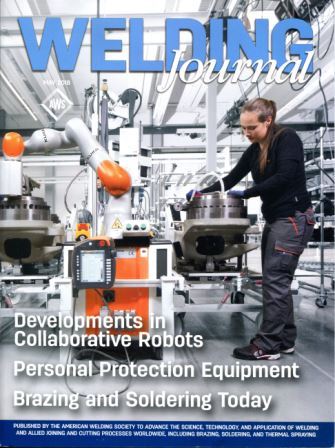Once again, Superior Flux has made the news!
This time it’s an article published in the May 2018 edition of Welding Journal, entitled, “Techniques for Soldering to Aluminum”. Thank you to William “Bill” Avery, Metal Joining Expert at Superior Flux, and Dr. Yehuda Baskin, President of Superior Flux, for yet another well-written and informative article.
We can’t even count how many times have people told us, “I didn’t know you could solder to aluminum!” If this sounds like you, or if you have questions about aluminum soldering, do yourself a favor and read the article, “Techniques for Soldering to Aluminum”. You’ll find out that you can solder aluminum. Sure, it won’t be as easy as soldering, say, copper or even steel. But, if you familiarize yourself with the key points of aluminum soldering, as are spelled out in the article, then you will learn how to effectively solder aluminum.
And there’s no better time than now to learn how to solder aluminum. More and more companies are exploring aluminum soldering in areas ranging from automotive, electronics, heat sinks, HVAC and more. Aluminum is lighter and cheaper than copper, and in many cases it’s sufficiently conductive, both thermally and electrically, to give copper a run for its money. And brazing aluminum, with its high temperatures, is not nearly as forgiving as soldering aluminum.
The best part about all this is: we’re only seeing the beginning of aluminum soldering’s rising star.
So here’s what the article, “Techniques for Soldering to Aluminum”, spells out as some of the keys to soldering aluminum.
The Right Flux: You need an aluminum soldering flux – a flux that is specifically formulated for soldering aluminum. Just because a flux is strong enough to solder an alloy like stainless steel doesn’t mean it’ll work on aluminum. Superior Flux has the broadest range of fluxes for soldering aluminum on the market, including fluxes in gel, paste, liquid and solder paste form.
The Right Solder: Your goal in soldering is to create an intermetallic bond with the aluminum. Certain filler alloy combinations, such as tin-zinc, tin-silver, SN100C ™ and ALUSAC-35™ are better at creating this special bond. Without an intermetallic bond you could end up with something that looks like a joint but doesn’t have any “teeth.” In exciting new research we have determined that Nihon Superior’s ALUSAC-35™ is perhaps the only solder on the market that can effectively solder aluminum and then pass Salt-Spray testing. And keep in mind that solder comes in many forms: wire, foil, preforms, and mixed together with specially formulated fluxes as an aluminum solder paste. Our Aluminum-Flux Cored Wire (AFCW) is a pioneer in the field, an effective aluminum flux cored wire that comes in multiple alloy types and diameters. Our line of Aluminum Solder Pastes and Tinning Pastes is the broadest in the market. Our chemists are constantly working to improve upon the formulations and to work with customers on aluminum soldering applications. We think creatively, considering the best option for that particular application.
Type or “Series” of Aluminum: Aluminum alloys are classified into series, based on alloy composition and additives. Some aluminum series are easier to solder than others; and some are impossible to solder (for now!). For example, the 1000 and 3000 series (1XXX & 3XXX) are easier to solder than the 6000-series. The 5000-series aluminum is hit or miss. When it can be soldered, it can only be done so by first pre-tinning the surface of the aluminum. Also keep in mind that it’s always most challenging when soldering aluminum-to-aluminum. But when soldering aluminum to a more solder-friendly metal, like copper, you’re at an advantage.
Think HEAT! Aluminum needs heat to accept solder, usually to the tune of 300°C or more. And you want to be measuring the temperature of the aluminum, not your heat source. Aluminum is a great heat sink, so the heat source will need to be even higher to get the aluminum up to the right temperature. Soldering aluminum is not like soldering copper; it’s not enough to just heat up and melt the solder. Even with the right flux and solder combination, you won’t achieve soldering if the aluminum isn’t hot enough to accept the solder alloy. In addition to this, it has to reach this temperature within a certain time period (usually under 8 minutes) or else the flux will be spent, all without having done its job. Fortunately, there are many heating methods out there, such as ovens, induction, torch, hot plates, etc. to help you achieve the right temperature within the acceptable window.
Don’t be daunted by your aluminum soldering project!
Read the article, check out our other Aluminum Fluxes, or Contact Us about your aluminum soldering challenges.
Our research on practical aluminum soldering is perhaps the most advanced on the market today, and we’re just getting started. Look forward to more articles on aluminum soldering, as well as on other pioneering areas in soldering, brazing and welding.



